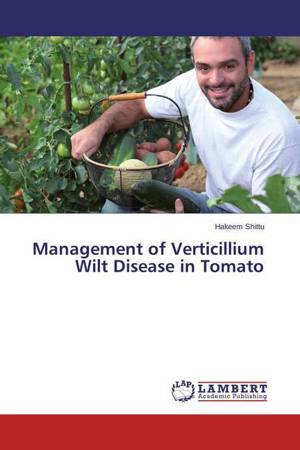
- Afhalen na 1 uur in een winkel met voorraad
- Gratis thuislevering in België vanaf € 30
- Ruim aanbod met 7 miljoen producten
- Afhalen na 1 uur in een winkel met voorraad
- Gratis thuislevering in België vanaf € 30
- Ruim aanbod met 7 miljoen producten
Zoeken
€ 43,95
+ 87 punten
Omschrijving
Tomato is one of the most popular and widely cultivated vegetables in the world. It is famous for its culinary, industrial and ornamental values. Tomato is a susceptible host to many fungal pathogens, including Verticillium. In general, the wilt disease caused by these pathogens is very difficult to control because Verticillium species have: broad host range; resting structures that have long survivability; and cyclical systemic nature of colonization within the vascular system of their host plants. All these factors combined, render chemical, physical and cultural attempts at protection of plants against Verticillium wilt disease ineffective and impracticable. Currently, the most effective way to prevent the disease is the breeding of resistant cultivars, but most tomatoes that are of economic importance do not contain resistant genes against Verticillium pathogens. There have been reports on some soils, termed suppressive, in which certain diseases are suppressed. The book, "Management of Verticillium Wilt Disease of Tomato" presents two research projects that give insights on how Verticillium wilt disease of tomato can be managed with the type of soil in which they are grown.
Specificaties
Betrokkenen
- Auteur(s):
- Uitgeverij:
Inhoud
- Aantal bladzijden:
- 76
- Taal:
- Engels
Eigenschappen
- Productcode (EAN):
- 9783659647000
- Verschijningsdatum:
- 5/12/2014
- Uitvoering:
- Paperback
- Afmetingen:
- 150 mm x 220 mm
- Gewicht:
- 118 g

Alleen bij Standaard Boekhandel
+ 87 punten op je klantenkaart van Standaard Boekhandel
Beoordelingen
We publiceren alleen reviews die voldoen aan de voorwaarden voor reviews. Bekijk onze voorwaarden voor reviews.








